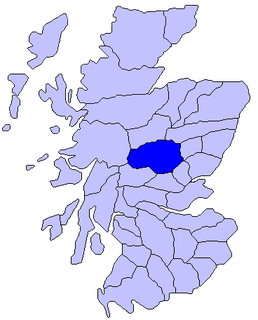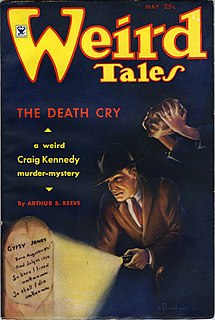Related Research Articles

Kenneth MacAlpin or Kenneth I was King of Dál Riada (841–850), King of the Picts (843–858), and the King of Alba (843–858). He inherited the throne of Dál Riada from his father Alpín mac Echdach, founder of the Alpínid dynasty. Kenneth I conquered the kingdom of the Picts in 843–850 and began a campaign to seize all of Scotland and assimilate the Picts, for which he was posthumously nicknamed An Ferbasach. Forteviot became the capital of his kingdom, and he also fought the Britons of the Kingdom of Strathclyde and the invading Vikings from Scandinavia. Kenneth also relocated relics including the Stone of Scone from an abandoned abbey on Iona to his new domain.

The Picts were a group of peoples who lived in what is now northern and eastern Scotland during Late Antiquity and the Early Middle Ages. Where they lived and what their culture was like can be inferred from early medieval texts and Pictish stones. Their Latin name, Picti, appears in written records from the 3rd to the 10th century. Early medieval sources report the existence of a distinct Pictish language, which today is believed to have been an Insular Celtic language, closely related to the Brittonic spoken by the Britons who lived to the south.
Alpín mac Echdach was a supposed king of Dál Riata, an ancient kingdom that included parts of Ireland and Scotland.

Causantín or Constantín mac Fergusa was king of the Picts, in modern Scotland, from 789 until 820. He was until the Victorian era sometimes counted as Constantine I of Scotland; the title is now generally given to Causantín mac Cináeda. He is credited with having founded the church at Dunkeld which later received relics of St Columba from Iona.

The Battle of Dun Nechtain or Battle of Nechtansmere was fought between the Picts, led by King Bridei Mac Bili, and the Northumbrians, led by King Ecgfrith, on 20 May 685.
Pictish is the extinct language spoken by the Picts, the people of eastern and northern Scotland from Late Antiquity to the Early Middle Ages. Virtually no direct attestations of Pictish remain, short of a limited number of geographical and personal names found on monuments and the contemporary records in the area controlled by the kingdoms of the Picts, dating to the early medieval period. Such evidence, however, may point to the language being an Insular Celtic language related to the Brittonic language spoken prior to Anglo-Saxon settlement in what is now southern Scotland, England, and Wales, but this is contested.

Atholl or Athole is a large historical division in the Scottish Highlands, bordering Marr, Badenoch, Lochaber, Breadalbane, Strathearn, Perth, and Gowrie. Historically it was a Pictish kingdom, becoming one of the original provinces of the Kingdom of Alba before being incorporated into the sheriffdom and later county of Perthshire. Today it forms the northern part of Perth and Kinross, Scotland.

The Caledonians or the Caledonian Confederacy were a Brittonic-speaking (Celtic) tribal confederacy in what is now Scotland during the Iron Age and Roman eras. The Greek form of the tribal name gave rise to the name Caledonia for their territory. The Caledonians were considered to be a group of Britons, but later, after the Roman conquest of the southern half of Britain, the northern inhabitants were distinguished as Picts, thought to be a related people who would have also spoken a Brittonic language. The Caledonian Britons were thus enemies of the Roman Empire, which was the occupying force then administering most of Great Britain as the Roman province of Britannia.

The Maeatae were a confederation of tribes that probably lived beyond the Antonine Wall in Roman Britain.

A Pictish stone is a type of monumental stele, generally carved or incised with symbols or designs. A few have ogham inscriptions. Located in Scotland, mostly north of the Clyde-Forth line and on the Eastern side of the country, these stones are the most visible remaining evidence of the Picts and are thought to date from the 6th to 9th century, a period during which the Picts became Christianized. The earlier stones have no parallels from the rest of the British Isles, but the later forms are variations within a wider Insular tradition of monumental stones such as high crosses. About 350 objects classified as Pictish stones have survived, the earlier examples of which holding by far the greatest number of surviving examples of the mysterious symbols, which have long intrigued scholars.
Bran Mak Morn is a hero of five pulp fiction short stories by Robert E. Howard. In the stories, most of which were first published in Weird Tales, Bran is the last king of Howard's romanticized version of the tribal race of Picts.

"Beyond the Black River" is one of the original short stories about Conan the Cimmerian, written by American author Robert E. Howard and first published in Weird Tales magazine, v. 25, nos. 5-6, May-June 1935. The story was republished in the collections King Conan and Conan the Warrior. It has more recently been published in the anthology The Mighty Swordsmen, and the collections The Conan Chronicles Volume 2: The Hour of the Dragon and Conan of Cimmeria: Volume Three (1935-1936). It's set in the pseudo-historical Hyborian Age and concerns Conan's battle against a savage tribe of Picts in the unsettled lands beyond the infamous Black River.
The Battle of Two Rivers was fought between the Picts and Northumbrians in the year 671. The exact battle site is unknown. It marked the end of the Pictish rebellion early in the reign of Ecgfrith, with a decisive victory for the Northumbrians. Attestation of the battle is limited to the account in Stephen of Ripon's Vita Sancti Wilfrithi.

Fortriu was a Pictish kingdom that existed between the 4th and 10th centuries. It was traditionally believed to be located in and around Strathearn in central Scotland, but is more likely to have been based in the north, in the Moray and Easter Ross area. Fortriu is a term used by historians as it is not known what name its people used to refer to their polity. Historians also sometimes use the name synonymously with Pictland in general.

Many writers have been drawn to the idea of the Picts and created fictional stories and mythology about them in the absence of much real data. This romanticised view tends to portray them as sometimes wearing the modern Kilt or as noble savages, much as the view of Europeans on Native Americans in the 18th century.
"Wolves Beyond the Border" is one of the original stories by American writer Robert E. Howard featuring Conan the Cimmerian, a fragment begun in the 1930s but not finished or published in Howard's lifetime. It is a peripheral story in the canon in that while it takes place in Conan's "Hyborian Age" and during Conan's lifetime, Conan does not actually appear, but is merely mentioned. The story was completed by L. Sprague de Camp and in this form first published in the collection Conan the Usurper (1967). It has since been published in its original form in the collection The Conan Chronicles Volume 2: The Hour of the Dragon and Conan of Cimmeria: Volume One (1932-1933).

Scotland was divided into a series of kingdoms in the early Middle Ages, i.e. between the end of Roman authority in southern and central Britain from around 400 CE and the rise of the kingdom of Alba in 900 CE. Of these, the four most important to emerge were the Picts, the Gaels of Dál Riata, the Britons of Alt Clut, and the Anglian kingdom of Bernicia. After the arrival of the Vikings in the late 8th century, Scandinavian rulers and colonies were established on the islands and along parts of the coasts. In the 9th century, the House of Alpin combined the lands of the Scots and Picts to form a single kingdom which constituted the basis of the kingdom of Scotland.
Events from the 3rd century in Roman Britain.

Scotland during the Roman Empire refers to the protohistorical period during which the Roman Empire interacted with the area that is now Scotland. Despite sporadic attempts at conquest and government between the 1st and 4th centuries AD, most of modern Scotland, inhabited by the Caledonians and the Maeatae, was not incorporated into the Roman Empire.
References
- Isabel Henderson, The Picts, Frederick A. Praeger, Inc., New York, 1967.
- F.T. Wainwright, Editor, The Problem of the Picts, First Greenwood Reprinting, New York, 1970.